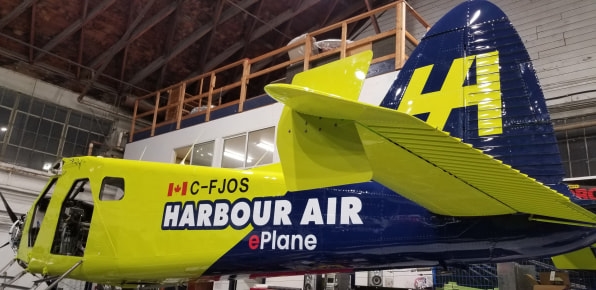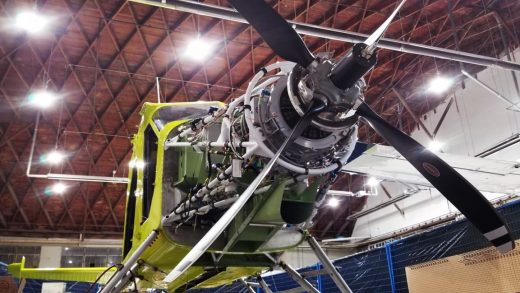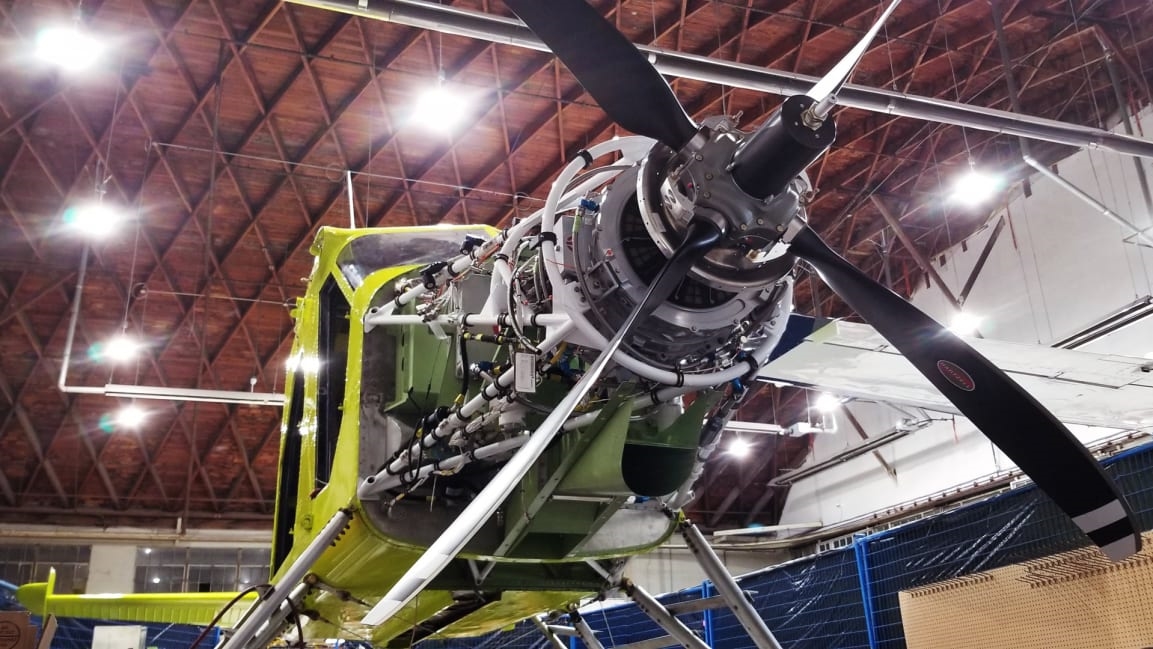This all-electric airplane is flying the first commercial flight test of its kind
When a seaplane took off this morning in Vancouver, Canada—with the CEO of Harbour Air, the charter plane company that owns the aircraft, at the controls—it was the world’s first commercial test of an all-electric airplane.
The zero-emissions plane was created by retrofitting a standard six-seater seaplane with an electric propulsion system from Magnix, a company headquartered in Redmond, Washington, that began developing new electric motors a decade ago. Until now, other tests of electric planes have involved either hybrids that still have fuel onboard or tiny two-seater planes. “This shows the industry, and it shows the flying public, that to fly in an electric aircraft on a commercial scale is indeed a real thing, and it’s viable,” says Magnix CEO Roei Ganzarski.
For airlines, it’s a small step toward cutting emissions. Flights emitted around 900 million metric tons of greenhouse gas emissions in 2018, and the UN predicts that will triple by 2050; one recent report estimates that emissions are actually increasing at an even faster pace. Most flights happen on large planes that can’t yet become electric. But for small planes—up to 12 passengers—electric flights are now possible.

For the airlines operating those planes, like Harbour Air, the technology has advantages beyond the carbon footprint. “The operating cost per flight hour will be anywhere between 50% to 80% lower,” says Ganzarski. Flying a traditional nine-passenger plane for an hour costs around $1,200, he says, but a plane retrofitted with an electric system costs around $400 an hour; a plane designed from scratch to be electric costs around $200. The savings come both from the cost of fuel and the fact that electric motors are simpler and therefore require less maintenance.
“You’re now saying to the airline, you can do multiple things with that added profit,” he says. “You can reduce ticket prices, for example. So you can offer a lot more flights to your customers at lower rates, which expands the pool of people who can now access these flights. You can also take that same profitability, buy more planes, and fly to more places.”
When the company launched, it didn’t initially focus on aviation, but in the course of research and development, created technology that it realized was well-suited for planes and launched an aviation program in 2018. Components inside the motor, like magnets and coils, are designed to have a high power-to-weight ratio. The motor is also lightweight because it’s designed to turn at a low speed; propellers move slowly and motors typically turn much more quickly, requiring a gearbox in between to make the system work, but by creating a motor that could match the speed of the propeller, the engineers eliminated more weight. They also designed a lightweight cooling system.
The technology, Ganzarski says, also offers levels of reliability that didn’t exist in some previous electric motors. The company is now also working with Eviation, another startup that designed a nine-seat electric plane from scratch and plans to begin flight tests. It’s also working to retrofit the Cessna Caravan, a commonly used nine-seat plane. While Magnix is also working on technology that can work in larger airplanes, it’s focused on what it calls the “middle mile” of aircraft right now—not jets and not smaller planes. “The middle mile is where we believe the sweet spot is—true revolution in aviation that can happen within the next five years,” he says.
After the test tomorrow, the companies will still have to get regulatory approval before they can begin commercial flights. “Once we fly, we expect at least two more years of work to be able to show and convince the government that we are as safe, as reliable, as redundant, as good as today’s aircraft,” says Ganzarski. They expect to get that certification in 2021. Harbour Air could be flying paying passengers on electric planes as early as 2022.
(37)



